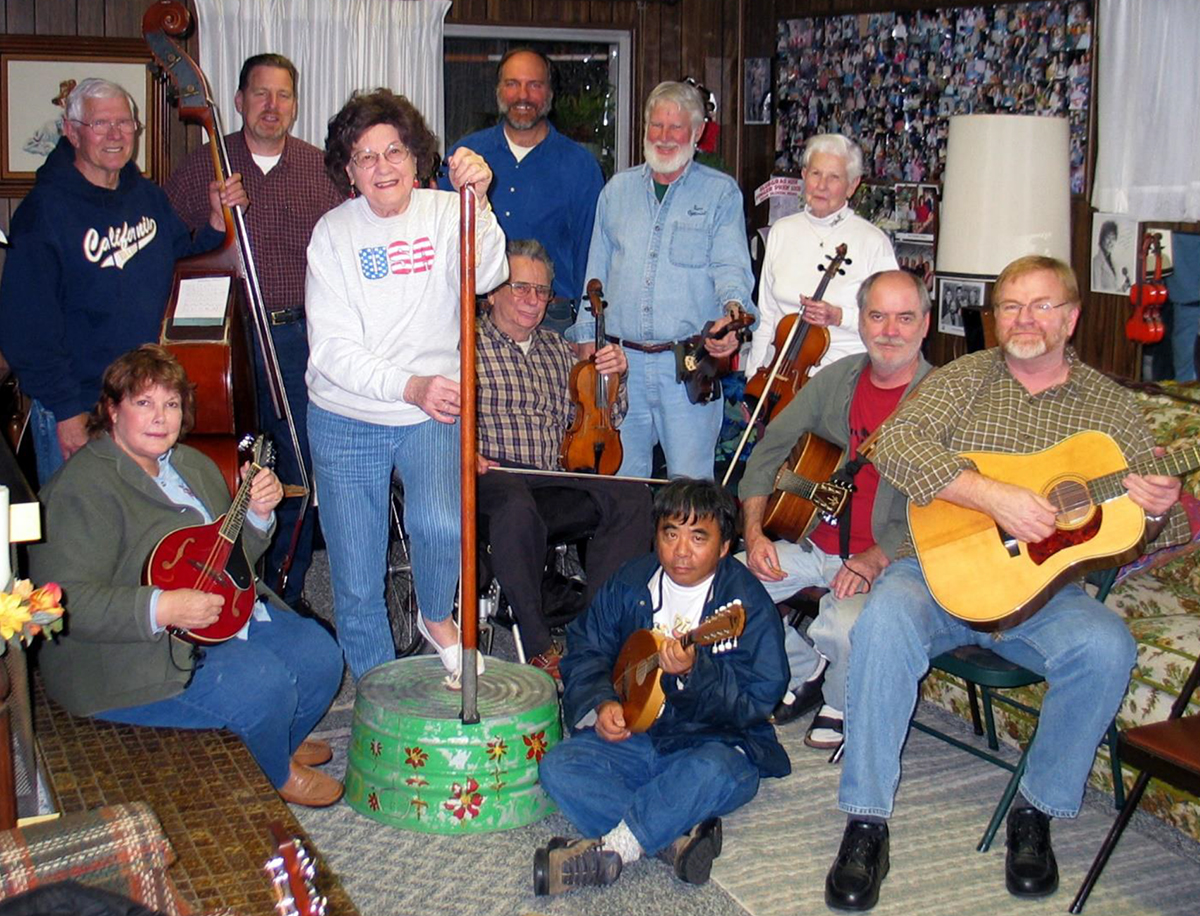

A typical jam session with Emma’s Gut Bucket Band.
It is estimated that at least 20 million people listen to and enjoy bluegrass music, according to the International Bluegrass Music Association (IBMA). Bluegrass music is enjoyed in all 50 U.S states and in more than 30 countries around the world. This begs two questions: (1) Why is it so popular? (2) If it’s so popular, why is bluegrass music rarely heard on commercial radio?
Some Thoughts on the Popularity of Bluegrass Music
The modern world is full of processed music, studio driven products, and electronic sounds and instruments. The popular trends in mainstream music change rapidly as these highly processed products search for the next hit.
In contrast, bluegrass music is played on non-electric, acoustic instruments, favoring virtuosity and authenticity. While a great deal of popular music favors a strong beat and a wall of sound, often not paying much attention to lyrics, bluegrass is the opposite. It tells stories where the lyrics are key, the instrumentation is presented by acoustic instruments without drums, and where virtuosity is a key aspect of the music.
These factors—and the authenticity of bluegrass music with its songs of home, love, family, and heart break—are key distinguishing aspects of this music that people seem to like. Also, there is a kind of stability to bluegrass music. It progresses with the times, but today’s modern bluegrass hits can trace their lineage directly to the founders of the 1940s. If you listen to Flatt and Scruggs from the 1950s and then to top bluegrass bands of today, you will hear the key consistent aspects of the instrumentation and song style in both. This stability and continuity is appealing to many in a world of constant changes.
As for why bluegrass music is rare on terrestrial radio, here are some thoughts. First, bluegrass fans often describe themselves as a “tribe.” They like the fact that you have to seek it out and decide if you like it and want it. There’s a bit of an insider feel. That’s in direct contrast to popular radio and its endless promotion and marketing. You are more likely to “discover” bluegrass music on your own, from a friend or by hearing some of the more mainstream bluegrass artists who are high profile and accessible. Second, bluegrass music is a player-oriented music. Many fans play an instrument, enjoy bluegrass jamming, collect instruments, and participate in more than just listening to the music. All this is part of the “tribe.”
If you hear and like bluegrass music you are welcome to join the tribe. But you won’t be lobbied incessantly by ads and commercial radio. Rather, it is standard practice for even the biggest bluegrass music stars to be approachable and to do “meet and greet” with the fans after a show. All this adds to the glue binding the tribe. Don’t expect that kind of glue or personal touch at your next rock concert!
It’s also true that putting bluegrass music on traditional radio is—in most parts of the country—not as economically productive for the stations and their commercial advertisers as presenting other music and talk formats. And, radio is about profits, not the quality or popularity of a genre of music.
Final thought. Much of the forgoing also applies to folk music, singer songwriter, and Americana, the wheelhouse of this publication, the San Diego Troubadour. So, if you are reading this you are likely already a member of one or more of these “tribes.”